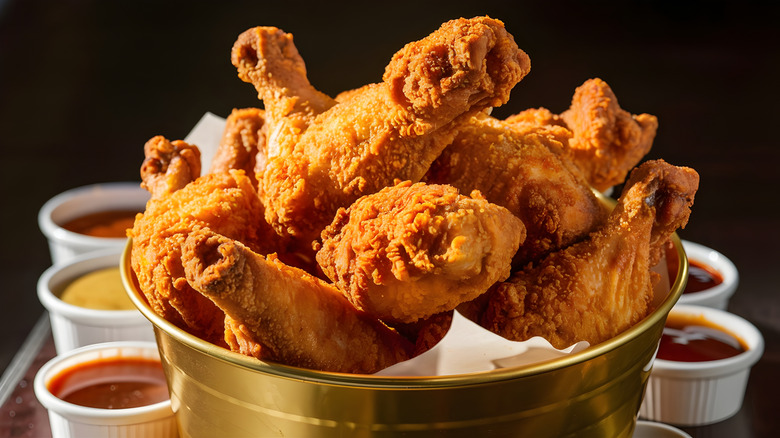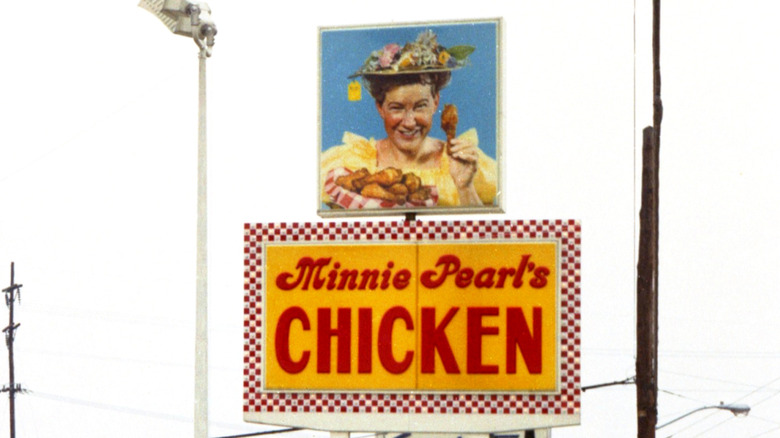The Vintage Fried Chicken Chain From Iowa That Could Have Been As Big As KFC
Fried chicken is one of the most iconic parts of soul food and its unique history. It's one of those timeless and classic dishes that is seemingly loved universally. Whether you like plain fried chicken from the nearest takeout spot or you prefer to make upgraded fried chicken at home, it's hard to deny the dish's appeal.
It was only a matter of time before the fast food industry tried its hand at capitalizing on the appeal of fried chicken. While KFC and the history of Colonel Sanders tend to be what immediately comes to mind in this regard, there's another fried chicken chain that actually had quite a following during its heyday: Minnie Pearl Fried Chicken. When it was established in the 1960s, the chain opened to eager customers and a flourishing public stock but was unfortunately brought down by mismanagement.
Perhaps what's saddest about Minnie Pearl Fried Chicken was that it was founded with the purpose of being direct competition against KFC, and if handled properly, it might have had a shot at beating KFC at its own game. Ironically, the greed invested in beating out KFC is what ultimately spelled the end for Minnie Pearl Fried Chicken. The founders only cared about making money and capitalizing on the fast food fried chicken craze rather than making a sustainable product and business.
The rise and fall of Minnie Pearl Fried Chicken
Brothers John Jay Hooker and Henry Hooker opened Minnie Pearl Fried Chicken in the late 1960s. The brothers decided to build their business around celebrity endorsement by convincing American comedian Minnie Pearl to give them permission to use her name on the business. At the time, Pearl was at the height of her fame, and the endorsement helped drum up publicity.
Initially, the scheme worked; the public stock of the restaurant was worth $64 million, and the brothers had sold the rights to nearly 300 locations, even though only 5 locations were up and running. Despite this initial success, there were two major problems: the brothers had never run a restaurant before, and the chain had no specific recipe for making chicken.
The chain continued to expand locations, but the lack of recipes for the chicken made the taste and quality of the chicken inconsistent or sometimes downright unlikable. At this point, the brothers were making their money by selling franchise locations and not actually from the chicken itself. Although the chain managed to grow to 40 operating locations, these issues became a vicious cycle: the brothers would sell a new location, which would then open to middling reviews at best due to the less-than-stellar food, and the location would not be able to sustain itself. The chain died out in less than two years in late 1970.

